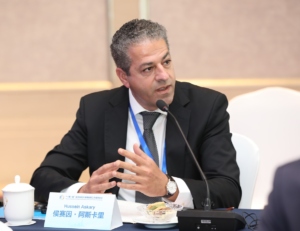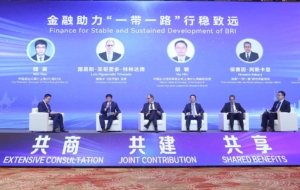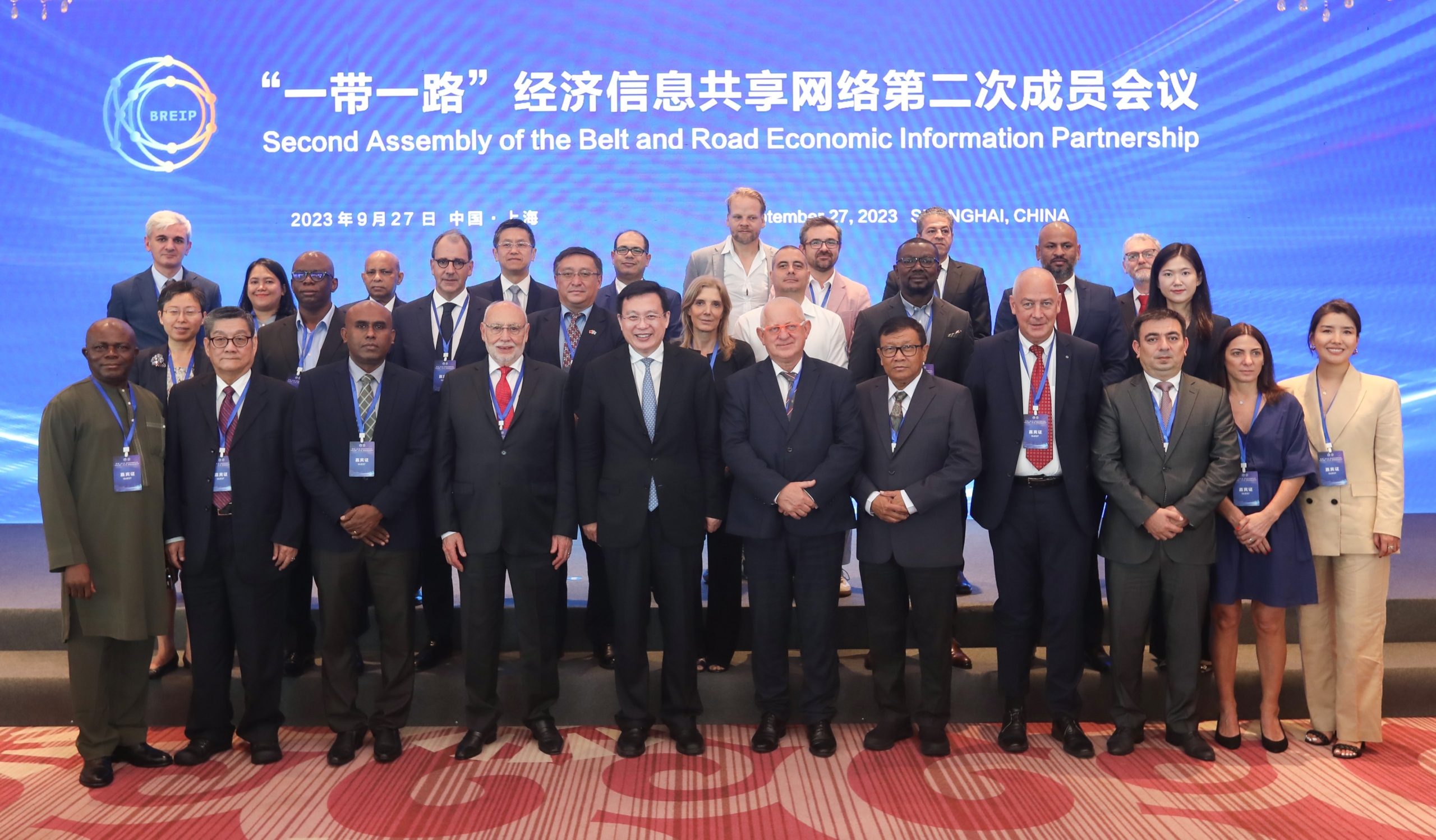Coinciding with the 10th anniversary of the launching of the Belt and Road Initiative (BRI) by Chinese President Xi Jinping in 2013, the Belt and Road Institute in Sweden (BRIX), represented by its Vice-Chairman Hussein Askary, participated in the two-day international Second Forum of the Belt and Road Economic Information Partnership (BREIP) in Shanghai on September 26-27. The BREIP was launched in 2019 by the Chinese news agency Xinhua in cooperation with international news agencies, business associations and think tanks that are focused on the development of the BRI. It has so far 54 members from all continents. The BRIX was admitted as a full member in the BREIP in this year’s forum after a period of association and cooperation that lasted two years.
The BREIP is an information platform whose members exchange and share economic information related to the BRI and China’s economic and trade relationship to the member nations. However, what makes it unique is that it brings together the expertise of media professionals together with scholars and entrepreneurs in one platform. This brings a new dimension to the breadth and accuracy of the information collected and shared on its platform in several languages.

The forum was in two sessions, one discussion roundtable for the members in the morning to discuss the development of the work of the BREIP, and another open conference in the afternoon keynoted by Mr. Fu Hua, President of Xinhua News Agency, and Mr. Gong Zheng, Mayor of Shanghai. The opening session was also addressed by Mrs. Chen Wenling, Chief Economist of China Center for International Economic Exchange (CCIEE) who gave a thorough presentation on the principles and achievements of the BRI in the past 10 years.
Sustainable financing of BRI
In a special panel on “Finance for a Stable and Sustained Development of the BRI”, Askary joined a number of prominent specialists in financial affairs such as Mr. Wei Hao, Vice-President of China’s Export-Import Bank Shanghai branch, Mr. Hu Min, Deputy Director of China’s Export and Credit Insurance Corporation (SINOSURE) Shanghai branch, and Mr. Zhu Sheng, Executive Director of International Affairs Department of Shanghai Stock Exchange. The Ex-Im Bank and SINOSURE are two of the key institutions responsible for the financing of BRI projects. Another European panellist was Mr. Luis Figueiredo Trindade, Chairman of Portuguese Journal Economico. The discussion was detailed and well-informed as reported by Xinhua.

Mr. Askary presented one major dilemma and several proposals for sustaining the financing of infrastructure projects in the 150 member nations of the BRI. The central challenge for the financing of the BRI projects, he said is “that infrastructure, such as transport, power, water management systems, healthcare, and education do not generate immediate monetary profits, but are necessary investments to enhance the productivity of the economy and society as a whole”. Therefore, to demand that the private sector rather than the state in the BRI nations provide the financing for the infrastructure is not feasible. Askary argued that state-backed credit, augmented by contributions from the private sector, will remain the main source of funding for BRI infrastructure. This credit must remain very long-term and at low interest rates.
The fact that the gap in infrastructure financing in the global south is around US$ 40 trillion means that China alone will not be able to provide the financing but can lead the way. Therefore, all nations from North and South should contribute in one way or another to this process. The proposals presented by the BRIX included leveraging the capital of the Asian Infrastructure Investment Bank (AIIB), The BRICS New Development Bank (NDB), and creating an infrastructure investment bank for the Shanghai Cooperation Organisations members (SCO). There should be a popularization of “BRI bonds” in all member countries in local currencies to enhance the capital of these banks or funds. On the bilateral level, China and each member country may establish a bilateral “development fund” mechanism financed by both sides jointly. In the case of nations with large quantities of natural resource such as oil, gas, and other minerals, “oil for construction” bilateral funds should be created by each respective country and China, leveraging a portion of the natural resources or exports of the raw materials as capital base for issuing credit for infrastructure. All these mechanisms require state guarantees but also thorough risk assessment and transparency.
Promising decades for the BRI
The panellists presented a number of innovative methods used to involve private capital in BRI projects both in China and in other countries through stock exchanges in Shanghai, Stockholm, London, and Dubai for example. The horizon for ensuring stable and sustainable financing for the BRI is wide open for new and innovative methods. However, the BRI has in its first ten years presented an effective and coordinated way of development financing, based on long-term results rather than immediate monetary benefits, and on real physical-economic development through large-scale infrastructure building rather than “aid” which runs off into the sands, perpetuating poverty.
The BRI has provided a model of trans-boundary economic cooperation that has been sorely missing since the end of the Bretton Woods system in 1971. The emphasis on the common goals of development of nations, transcending political, cultural, and ideological differences, is a unique feature of the BRI that ensures the respect of sovereignty and dignity of the respective nations participating in it. This is an important addition to the system of global governance where peace is ensured by economic cooperation.
The BREIP has all the features required to be a unique and successful platform for exchanges among experts from all nations that are jointly participating in building the BRI in the next decades.

